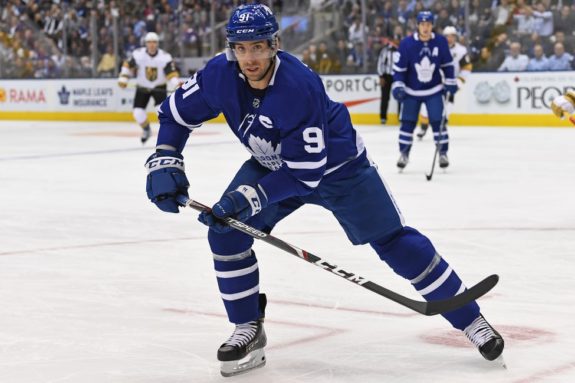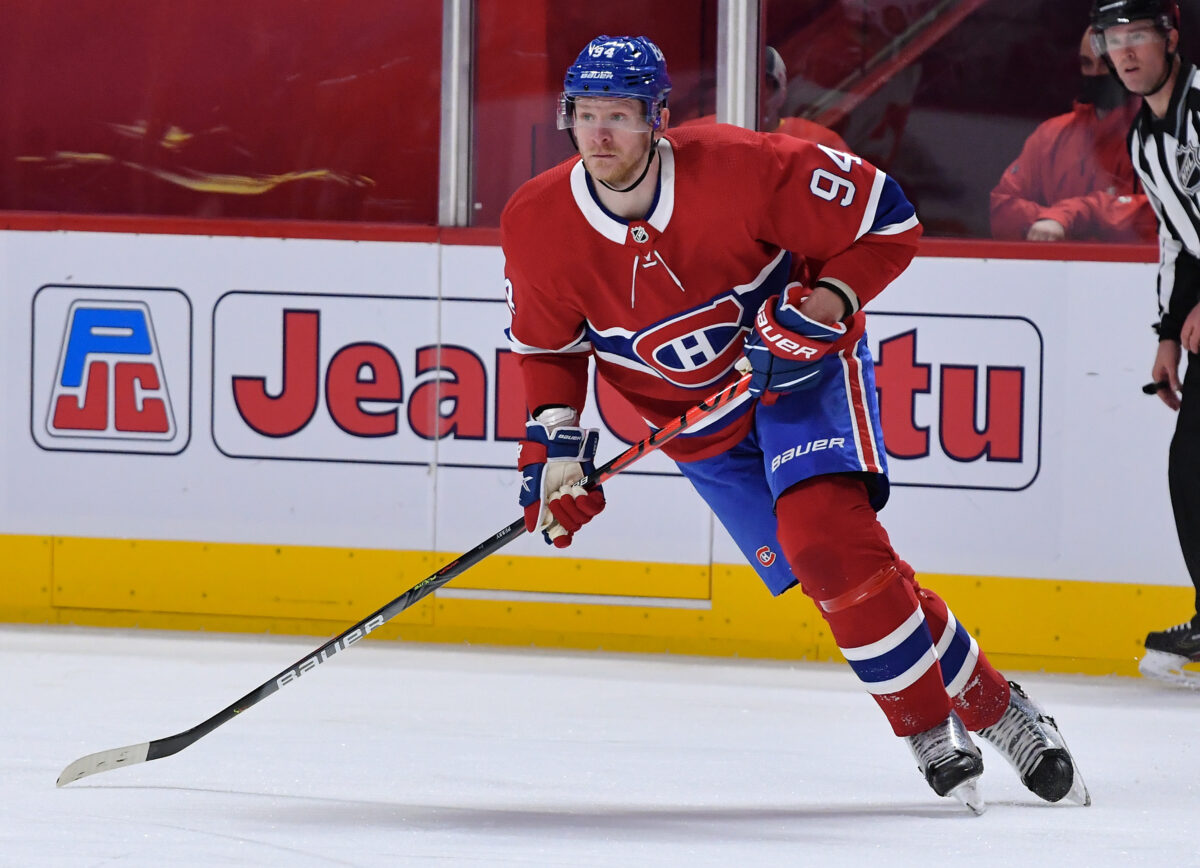A horrific incident occurred during the first period of Game 1 between the Montreal Canadiens and Toronto Maple Leafs Thursday night, casting a shadow over the much-anticipated contest. Just past the 10-minute mark, Maple Leaf’s captain John Tavares was shoved fairly innocently by Canadiens defenseman Ben Chiarot. Tavares fell helplessly to the ice and straight into the path of an oncoming Corey Perry, whose knee struck the captain directly in the head. The result was grotesque. It did not become any easier to digest due to the overkill barrage of replays.

Tavares left the ice on a stretcher but thankfully was able to give a thumbs up on the way off the ice. The health of the Maple Leafs’ captain was (and is) obviously the paramount concern for everyone involved. Nevertheless, the game had to continue. However, before play could resume, Maple Leafs forward Nick Foligno challenged Perry to a fight, which in this circumstance seemed entirely irrelevant, especially considering the injury Tavares suffered was the result of an accident. It did not matter. The puck dropped, and away they went. This incident and subsequent fight reignited the age-old hockey argument regarding ‘the code’ and its overall relevancy.
What is the Code?
The code has seemingly always been difficult to define clearly. I can try. In some ways, it can be described as a set of unwritten rules, that if followed correctly, maintains a level of integrity, accountability, and respect among the players. The common situation would be when a player deliberately delivers a hit on another player with the intention of hurting them. As a result of this sort of play, the player delivering the hit would then have to accept any fight challenges as a way of accounting for their mistake. Thus, they re-earn some respect. It goes the other way too, though. Usually, the player who extends the challenge is seen as someone ‘doing the right thing,’ by avenging the hit. The idea, then, is that the teams can put an incident behind them and return to normal play.

Corey Perry, Montreal Canadiens (Photo by Francois Lacasse/NHLI via Getty Images)
In the Canadiens context, this scenario has played out at times this season. On January 21, Vancouver defenseman Tyler Myers landed a blindside hit directly to the head of Joel Armia. Armia would miss time with a concussion. The next game, Joel Edmundson sought out Myers and the two fought. Afterwards, all appeared to be well between the two teams. Whether you like the code or not, in some ways, this was the code working as it was meant to, at least from the perspective of the players. Thursday night was different.
The Lines of the Code Blur
Perry is a player that adheres to the code. Earlier this season, he fought Edmonton Oiler forward Alex Chiasson for clipping the head of Carey Price, sending the netminder into concussion protocol. Throughout his career, Perry has played with a chip on his shoulder and has been involved in several incidents deemed illegal on the ice. For example, just last season, he was suspended for five games for an elbow to the face of Nashville Predators defenseman Ryan Ellis. He understands that these hits usually come with an almost instant reaction from the opposition, who are looking to hold him accountable for his actions.
Latest Canadiens Content:
- NHL Rumors: Canadiens, Islanders, Flames, Laine & Jeff Marek News
- Canadiens: Marc Bergevin’s 5 Biggest Mistakes
- Canadiens’ Best Contracts for 2024-25
- Canadiens Could Benefit From New KHL Rules and Get Demidov Early
- Canadiens Can’t Guarantee Barre-Boulet 2024-25 Roster Spot
The disconnect comes when a player literally does nothing wrong or outside of the rules and still has to accept a fight. You see it all over the NHL: a player lands a hard (but clean) hit and is immediately jumped as a result. In the instance last night, Perry looked reluctant to drop the gloves or even throw a counterpunch. That is because he should not have had to.
In his post-game press availability, Foligno acknowledged that the incident was clearly not intentional, yet he felt for the game to move along, he had to fight Perry:
This where the logic gets a little fuzzy. If Tavares had instead had his foot shattered by a Shea Weber slap shot, would Foligno then need to fight Weber? If not, then why did he have to fight Perry? What would Maple Leaf fans think if Foligno then broke his hand punching Perry, putting his team at a further disadvantage? Would his teammates say, “he did the right thing?”
I do not want to pick on Foligno as many players would have most likely done the same thing, but that is the wider problem. Another translation of his words might as well be, “I was angry that an accident happened so I wanted to punch an opposing player in the face. That way, no one else on my team would have to hurt that player or another player on the other team by less forgiving means.” Is it really impossible to move from a freak accident (in the most important game of the season so far) without engaging in this? Tavares was sent to the hospital, is it likely that he is wondering if someone went and punched Perry on his behalf? My guess is that this is not his main concern.
Reactions like this expand the boundaries of what the code is and blur the lines between how it should operate in theory versus how it is enacted in reality. How can the code remain coherent when the goalposts are always being moved as to what is acceptable and what is not? I guess that is the benefit of it being so clearly ill-defined. In any case, this was a clear example of how absurd the code can be and how it can negatively affect a situation that is already enveloped with disaster. Still, the hope must be that Tavares recovers and the teams move on.